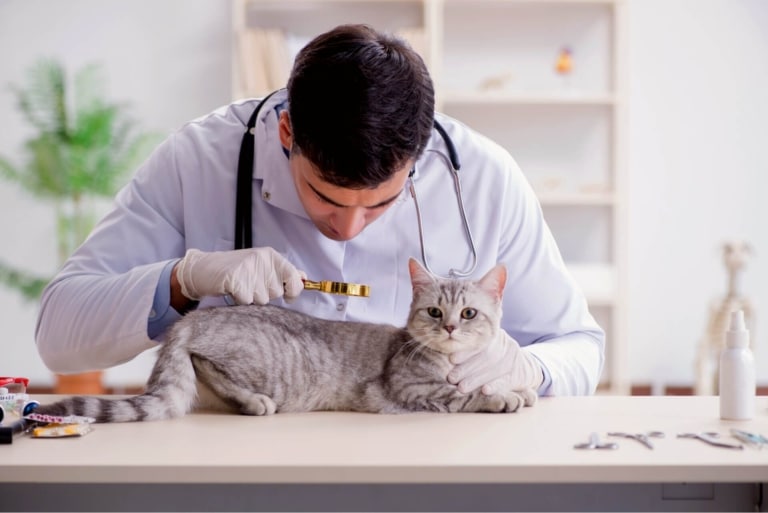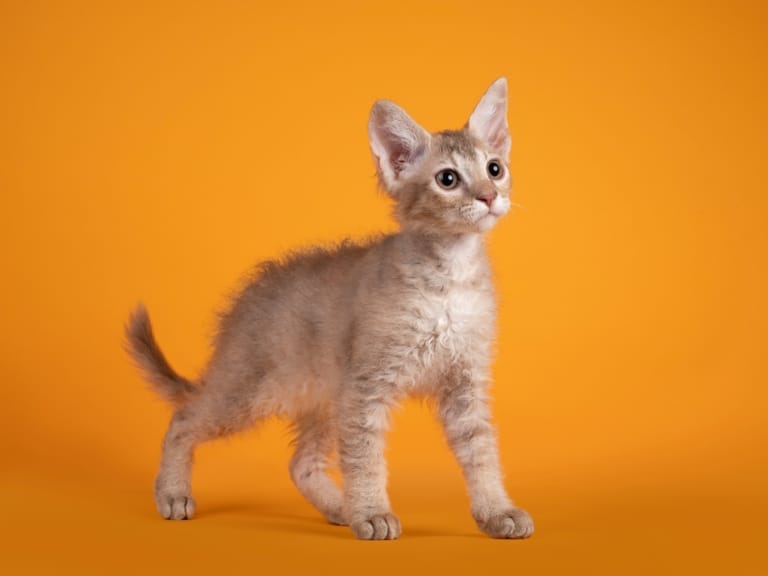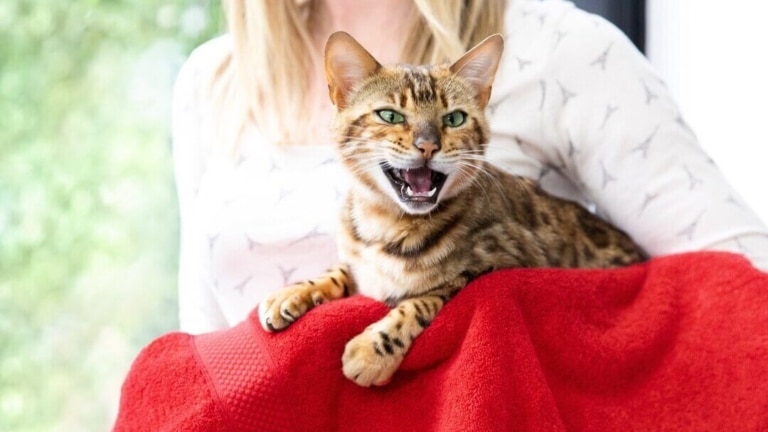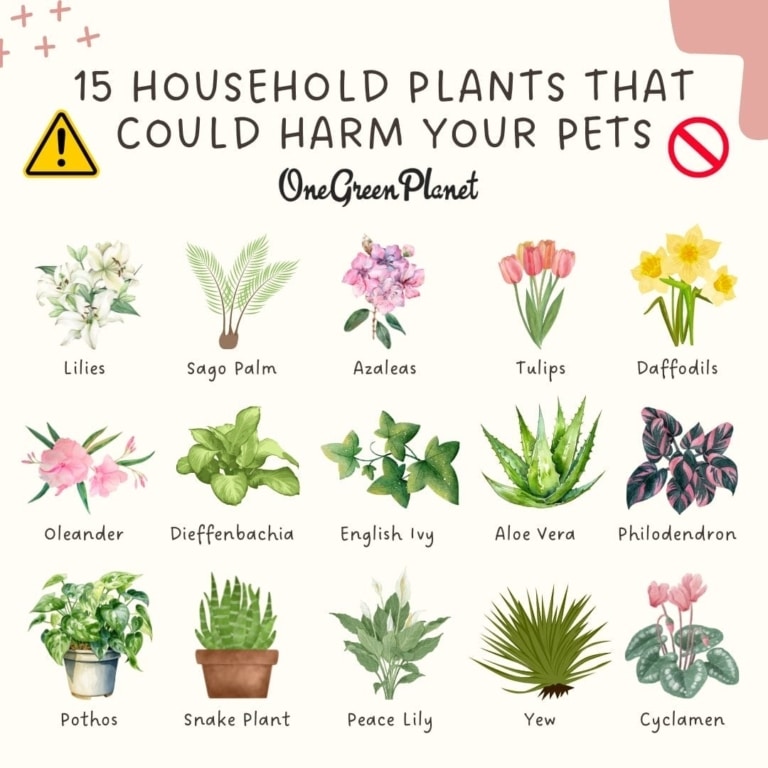Unfortunately, even cats that do not go outdoors are not immune to dermatologic problems. They can occur suddenly, change the behavior of the animal, cause discomfort and even painful sensations. The main thing is to notice the first signs in time and recognize when the situation requires the immediate attention of a specialist.
Common symptoms of skin diseases in cats
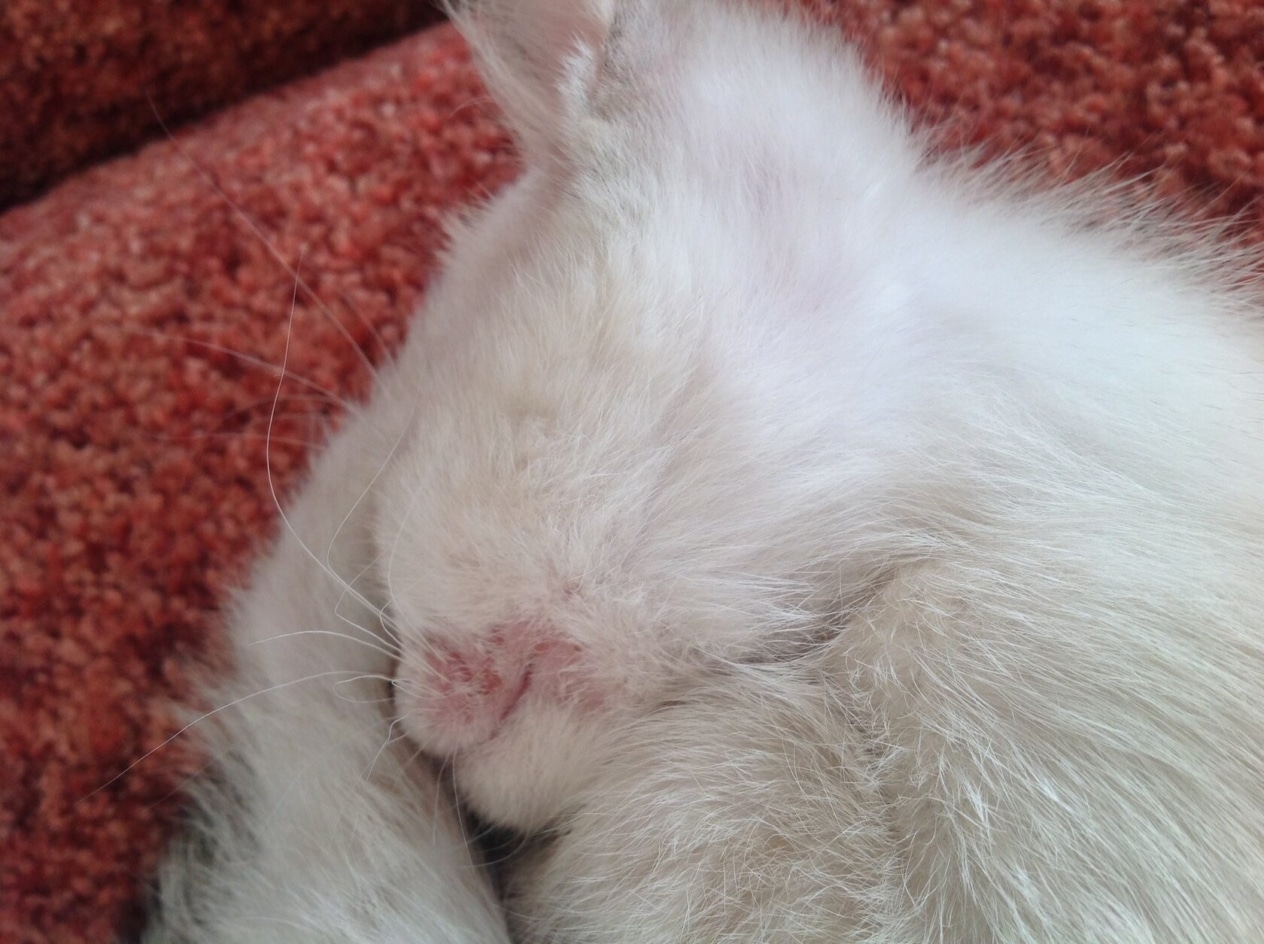
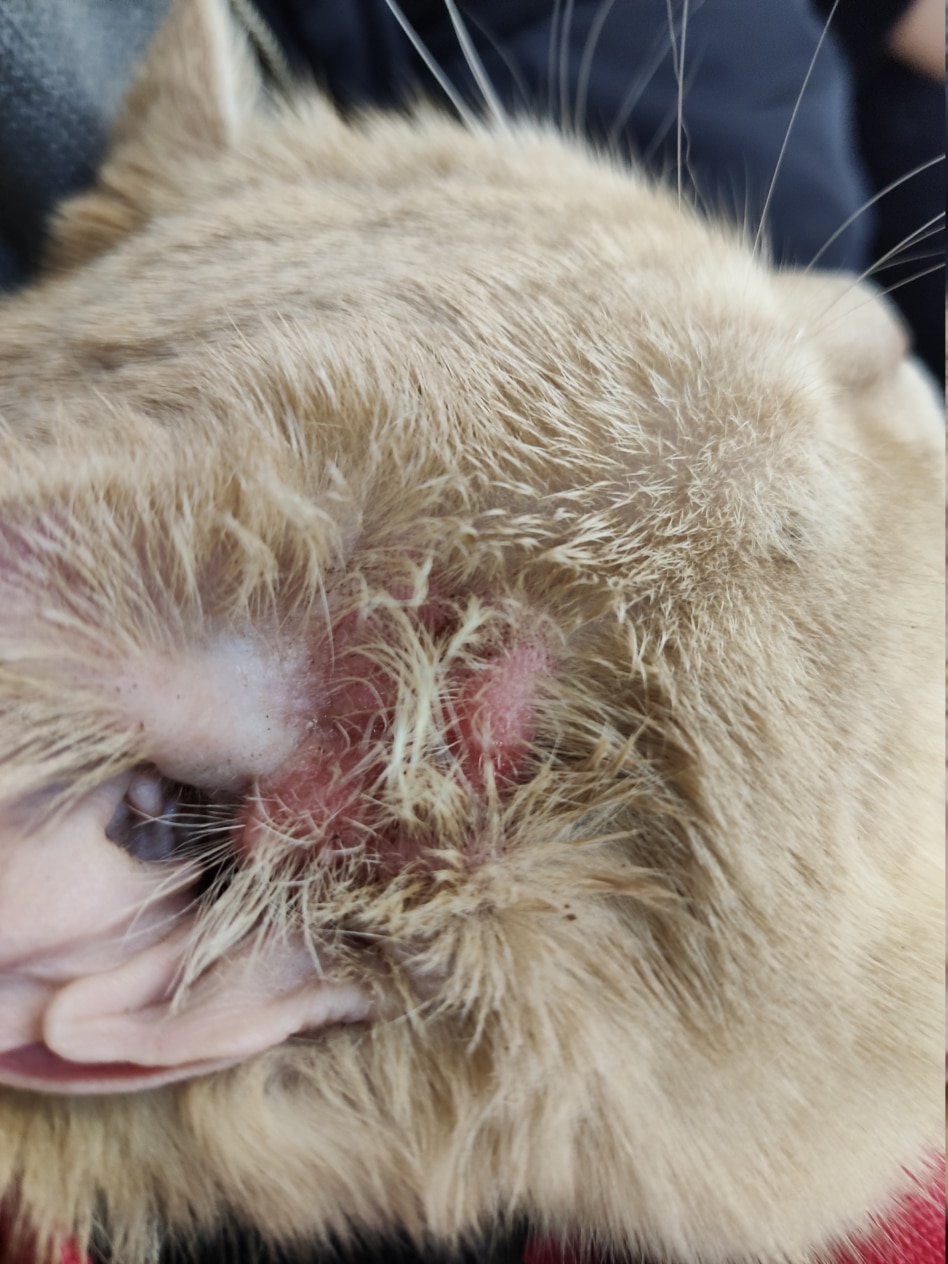
Skin problems in cats often begin subtly but progress quickly. One of the most common symptoms is persistent itching. If the cat actively scratches itself, especially in certain places, bites or licks with excessive intensity – this is already a red flag. Over time, redness, rashes, cracks or ulcers may appear on the skin, and the hair in these areas begins to fall out, exposing the irritated or inflamed surface.
Another sign is bald spots that appear for no apparent reason. They can be round, symmetrical or random in shape. Skin flaking, white or yellowish crusts, unpleasant odor from the affected area, as well as soreness when touched – all this indicates a pathological process. In severe cases, the skin becomes hot, pus appears, and the general condition of the animal worsens – the cat becomes lethargic, loses appetite or hides.
Even if the symptoms seem insignificant, it is important not to ignore them. Early diagnosis is the key to fast and effective treatment.
The most common dermatologic diseases in cats are as follows
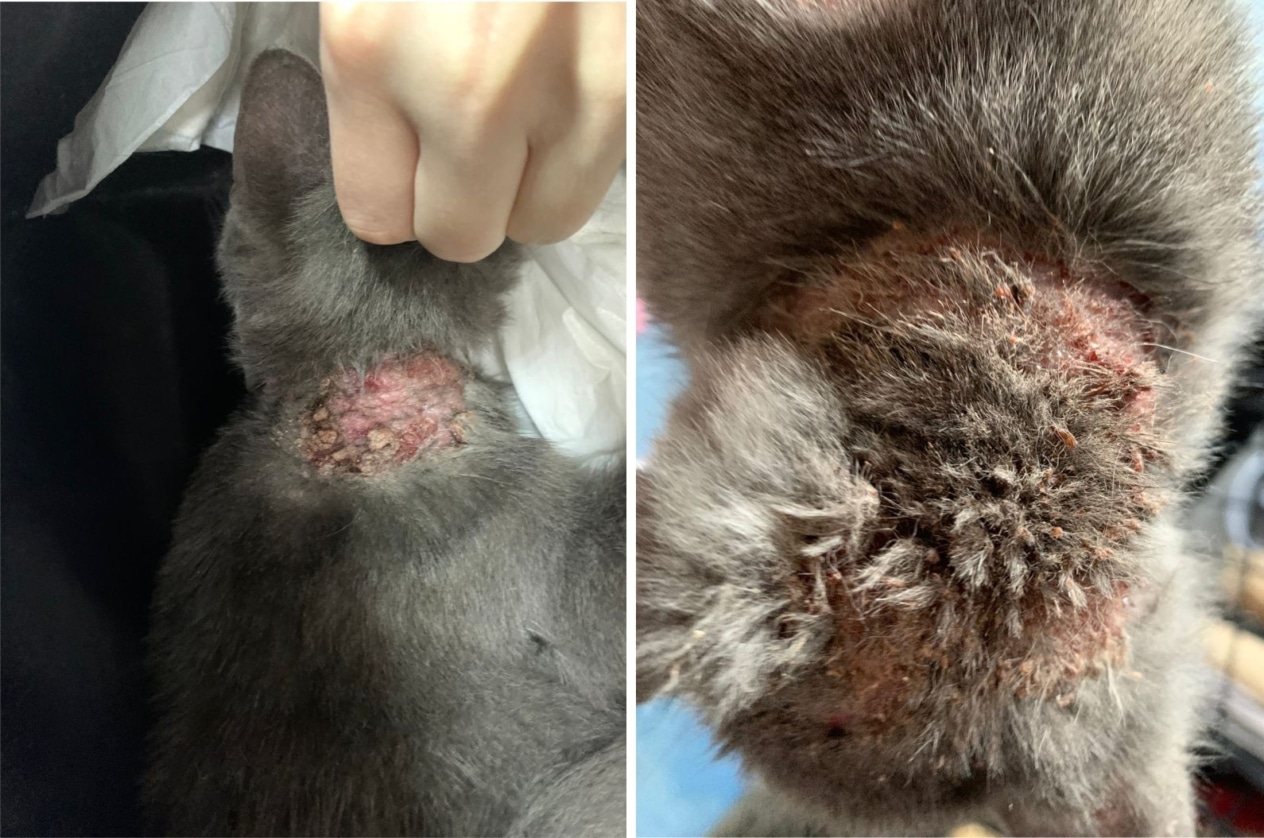
Among the most common causes of skin problems in cats are fungal infections, particularly lichen planus (dermatophytosis). This disease is easily transmitted between animals and sometimes to humans. It is characterized by round bald spots with flaking around the edges, as well as itching and inflammation.
Allergies are no less common – to food, household chemicals, pollen or even fleas. An allergic reaction causes severe itching, rashes, swelling and can quickly become chronic if the allergen is not identified.
Parasitic diseases are another frequent “acute guest”. Fleas, mites (especially ear or subcutaneous mites), lice and other parasites not only cause itching, but also dermatitis, bacterial contamination and allergic reactions.
Dermatologic problems also include bacterial infections, which often occur as a complication after skin scrapes or trauma. They can be accompanied by sores, pus, foul odor and general deterioration of the animal’s condition.
Seborrhea (impairedsebum production) and acne in cats are less obvious but fairly common problems. They manifest as black dots (especially on the chin), oily or flaky skin, and itching. Without treatment, acne can be complicated by infection and painful pustules.
What can trigger skin problems in cats?
A cat’s skin is an extremely sensitive system that reacts instantly to external and internal stimuli. One of the main causes of dermatologic problems are allergens. These can be food components, household chemicals, dust, plants or even litter box filler. It is hard to believe, but sometimes allergies even occur to a new toy or bedding fabric.
Another common factor is improper nutrition. Vitamin deficiency, unbalanced diet or excess of certain elements can cause not only flaking and hair loss, but also serious inflammatory processes. Stress and psycho-emotional state of the animal also play a role – cats are very sensitive to changes in the household, conflicts or absence of the owner, and this often manifests itself in the form of obsessive licking, which leads to baldness and irritation.
In addition, inadequate hygiene and grooming, especially in long-haired breeds, contributes to hairballs, skin irritation, fungi and bacteria. And, of course, decreased immunity, hormonal disorders or hereditary predispositions all create ideal conditions for the development of dermatological problems.
When to see a veterinarian and how the diagnosis is made
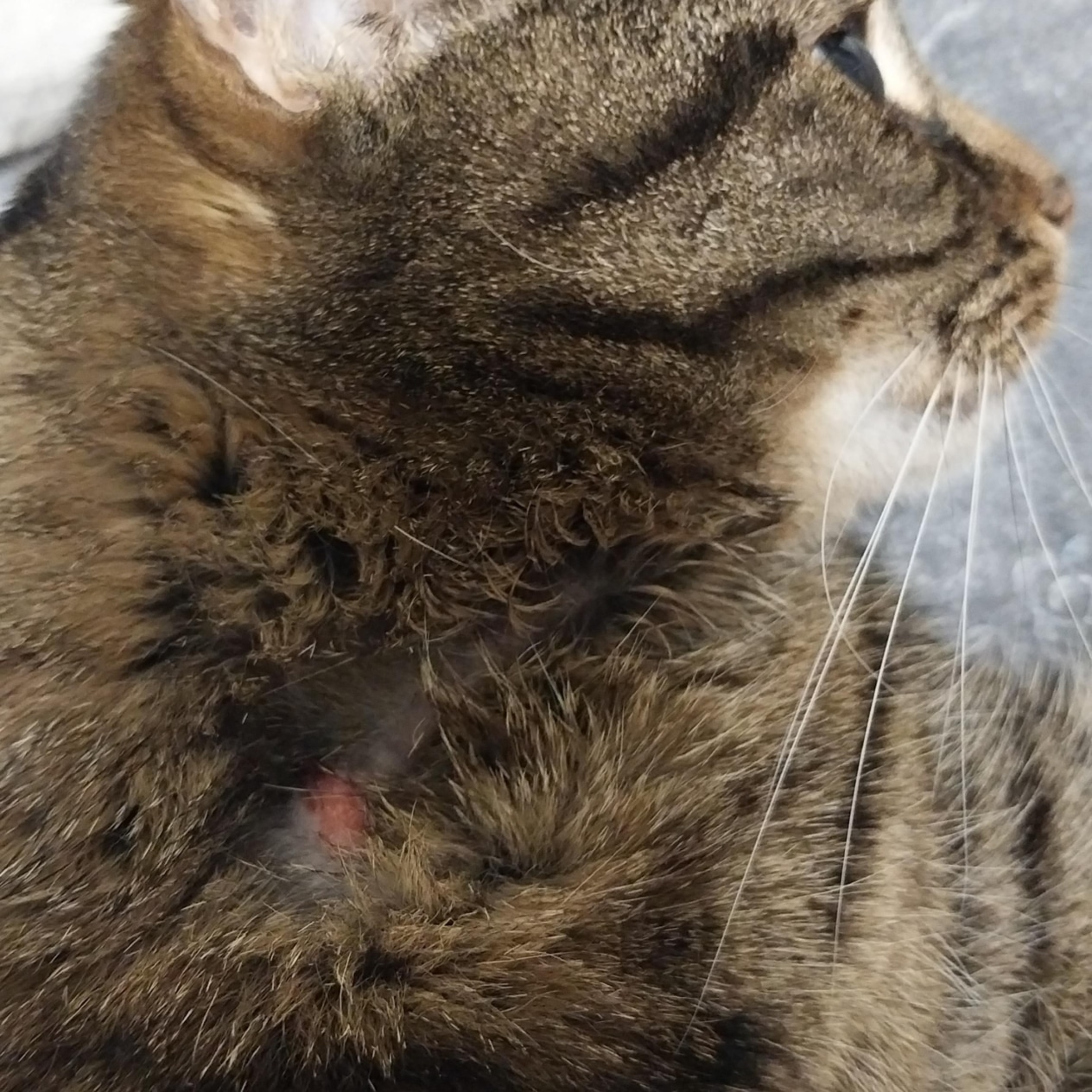
If you notice any changes on your cat’s skin – rashes, redness, bald spots, flaking, discharge or foul odor – you should not delay. It is especially alarming when the symptoms are accompanied by itching, the cat actively scratches or becomes aggressive when touching certain parts of the body. Even worse – if the appetite worsens, behavior changes, lethargy or fever appears.
At the appointment, the veterinarian performs a visual inspection, takes a history, and may also take a skin scraping, trichogram, do dermatologic tests, or schedule a blood test. In complicated cases, microscopy or culture to identify fungi or bacteria may be required. The earlier an examination is done, the better the chances of an easy and quick recovery.
Conclusion
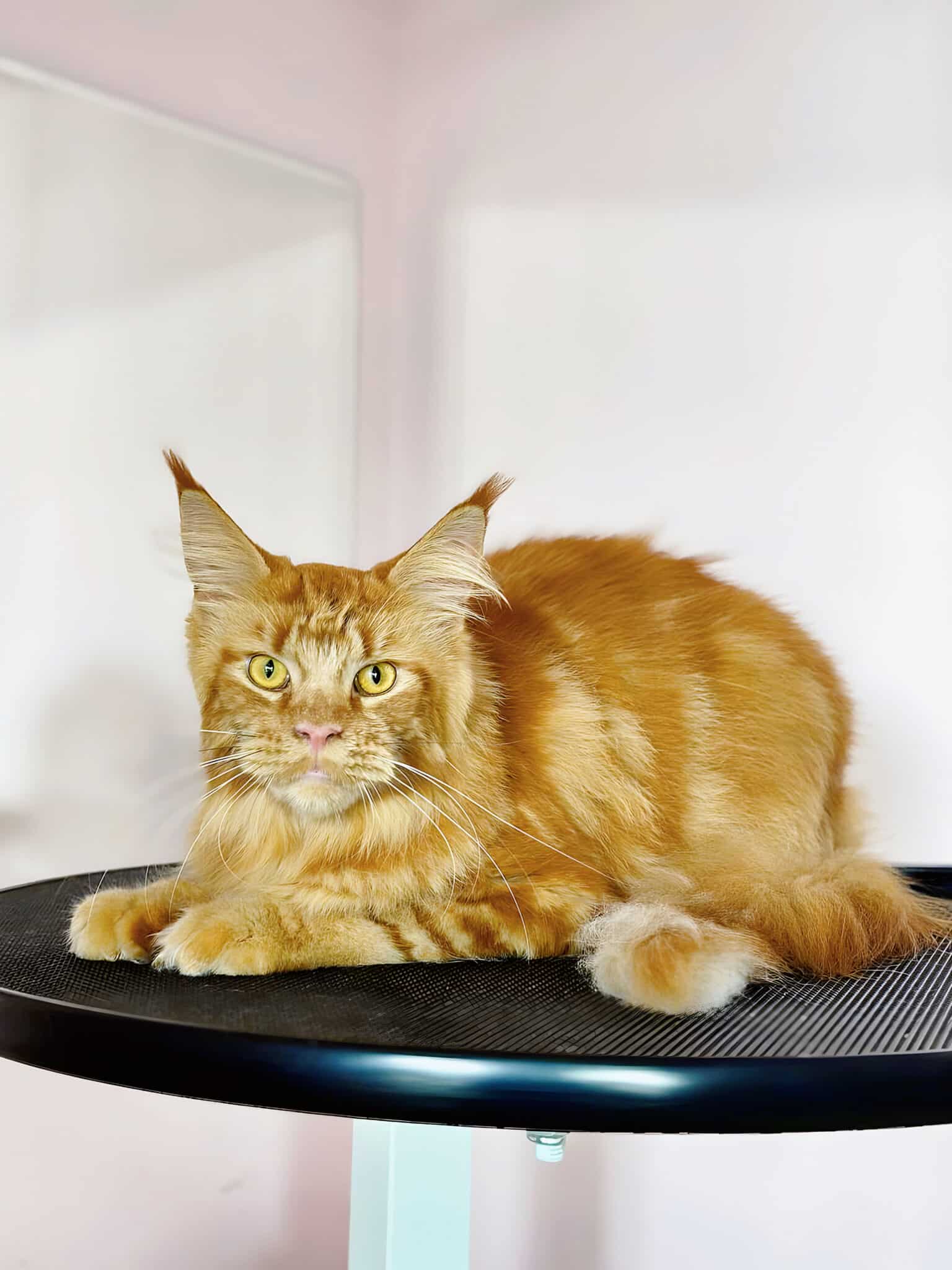
Skin diseases in cats are an important signal of the pet’s overall health. They are often the result of internal disorders or external irritants, and leaving them untreated is to risk the pet’s well-being. But the best treatment is prevention.
That is why it is important to regularly care for the coat, keep it clean, remove parasites in time, monitor the diet and emotional state of your cat. In the V.O.G DOG SALON grooming salon chain we offer professional care for cats of any breed: from delicate combing and ear cleaning to hygienic procedures and express diagnostics of skin condition.
Our masters will not only ensure your pet’s beauty, but also help to identify the first signs of problems, so that you can contact a veterinarian in time. It is better to maintain health than to treat the consequences – entrust prevention to professionals, and your cat will shine not only with hair, but also with happiness.

